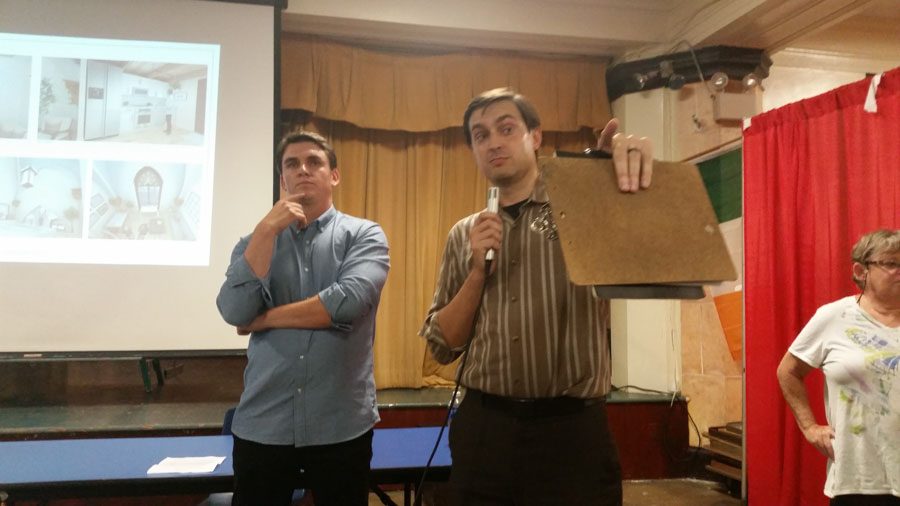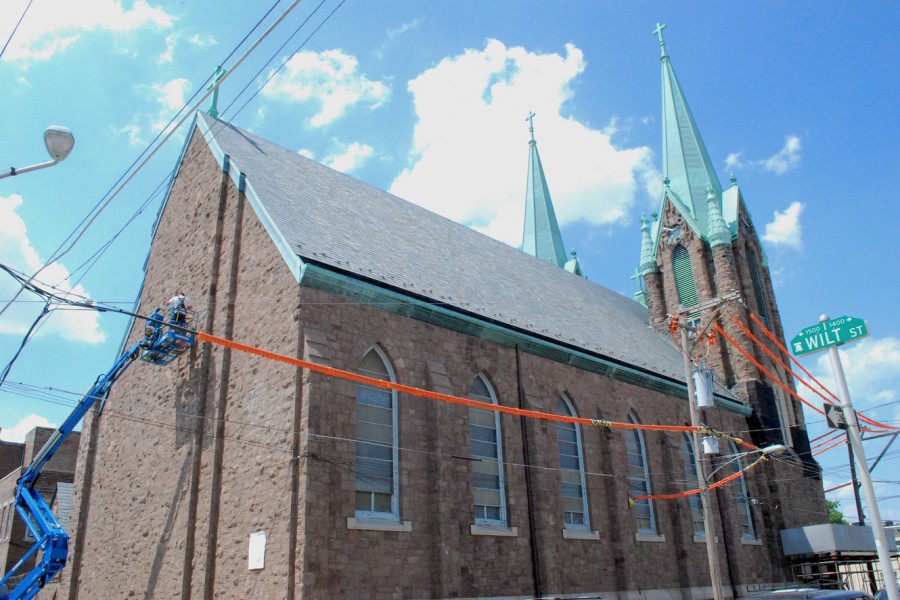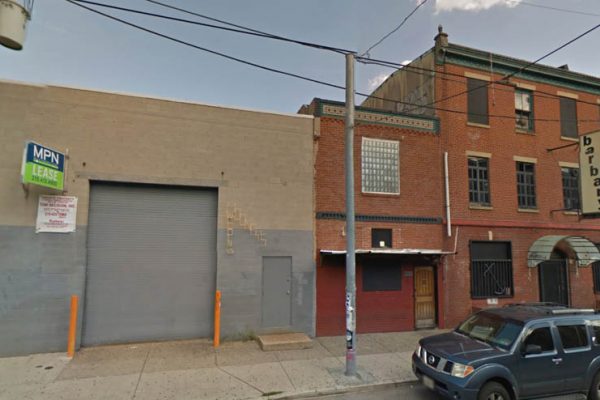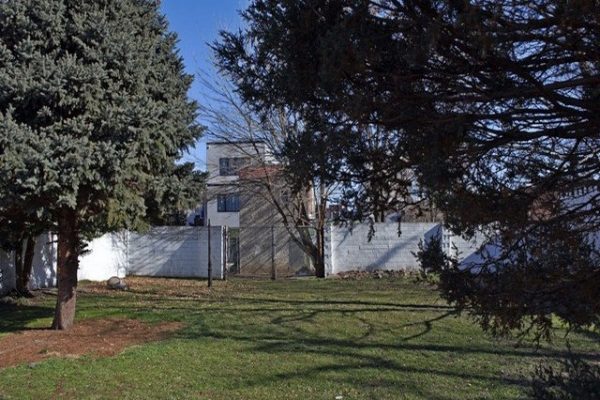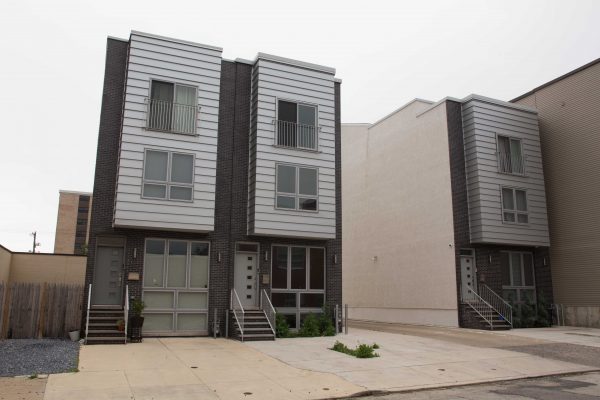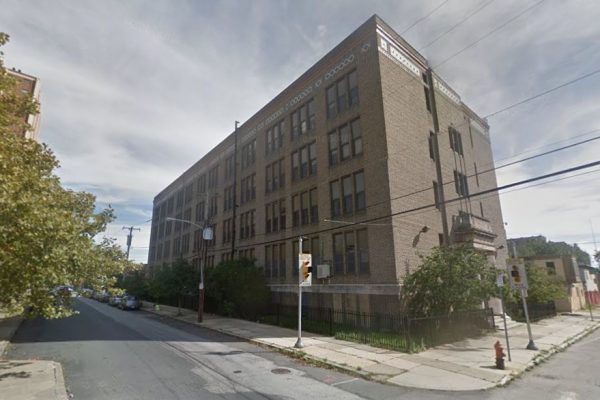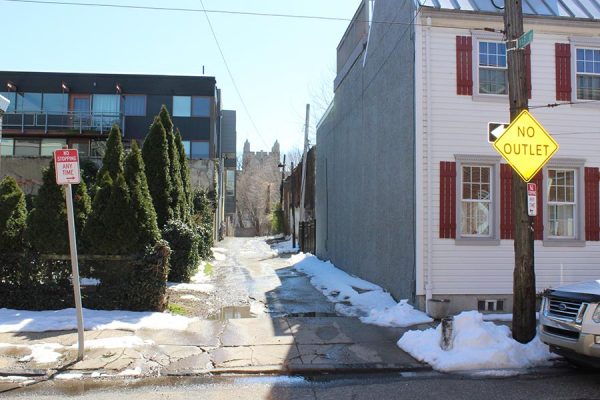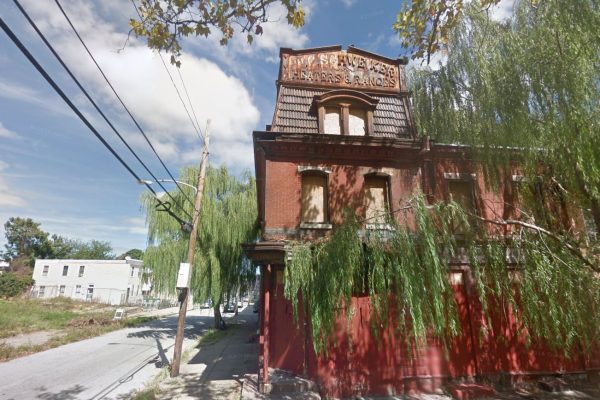Potential St. Laurentius Developer Says Possible Historic Designation of Church’s Interior Could Make Adaptive Reuse “Nearly Impossible”
Developer Leo Voloshin has spent nearly a year attempting to bring about an adaptive reuse of the interior of St. Laurentius Church into 23 apartments. In an interview with Spirit News, he declared that if a recent motion to nominate the church’s interior as historic is approved by the Philadelphia Historical Commission (PHC), his proposed development may become “nearly impossible” to achieve.
“It depends on how exactly the interior would be designated as historic,” Voloshin said. “But it would be unlikely that we would be able to proceed with the adaptive reuse we have proposed.”
As Spirit News reported in February 2016, Voloshin entered a preliminary agreement to purchase St. Laurentius Church from the Holy Name of Jesus Parish. This agreement is supported by the Archdiocese of Philadelphia (AOP).
Despite the obstacle that a historic designation would present to the development, the developer stresses that his commitment to the project is unwavering, saying, “This continues to be our focus… to prevent demolition.”
PHC recognizes that demolition could be the ultimate outcome following the potential designation if a financial hardship application were to be approved. If Holy Name Parish, the AOP, or developer claims financial hardship on the historic site, demolition could still occur.
“The PHC is keenly aware of this possibility,” said Jon Farnham, Executive Director of PHC, in an email to Spirit News. “Designating the interior and thereby perhaps preventing the current redevelopment project would potentially place the entire building at risk.”
“If there was no way to feasibly reuse the building, the Historical Commission would need to relax its restrictions to allow the property to be profitably reused,” Farnham added. “Regulating the property such that it had little or no value would be unconstitutional.”
According to Farnham the financial resources of the AOP, Voloshin, or any particular developer for that matter, would be irrelevant to the hardship review.
He concluded: “The question for a hardship review would be: Would any prudent developer acting with a profit motive adaptively reuse the building such that it produced a reasonable rate of return? It is a question that is answered by analyzing the construction costs to rehabilitate, the costs to finance the rehabilitation, and the real estate market and possible returns for rent, lease, and sale for various reuses.”
Farnham’s comments came after a recent non-binding PHC Committee meeting last month, where the committee recommended that the PHC designate the church’s interior as historic. John Wisniewski, a leading member of Save St. Laurentius, put forth the nomination of the church’s interior to the PHC Committee. Save St. Laurentius is one of the community groups that has supported efforts to preserve the church since it was deconsecrated and closed by the AOP in March 2014.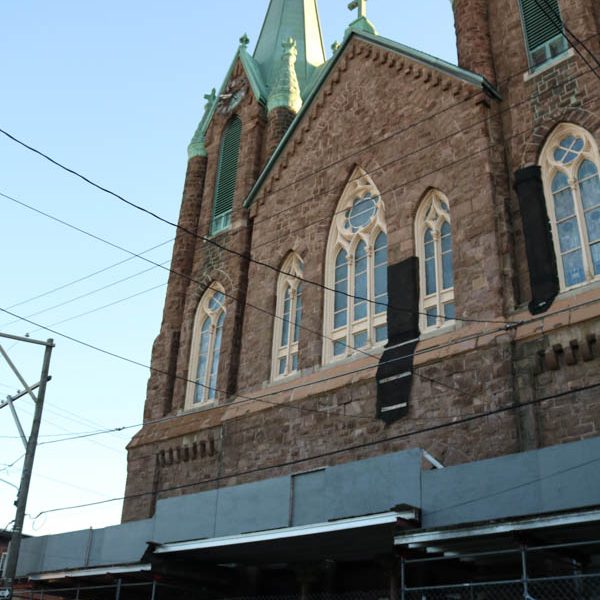
“It was kind of exciting from our end,” Wisniewski said. ”We had almost a full bus of supporters and a lot of representation at the meeting, including the honorary consul of Poland who represents Southeastern Pennsylvania.”
Wisniewski added: “The hearing took two and a half hours, so I think it was obvious that the PHC Committee recognized the historical, cultural and religious value the building has, especially to Polish immigrants in the Philadelphia area.”
St. Laurentius was the first Polish-American Church built in Philadelphia. It first opened in 1882.
Wisniewski’s support for the church’s interior historic designation — potentially blocking a path to Voloshin’s adaptive reuse of the church — comes in sharp contrast to comments he has made as recently as mid-November.
“There have been no takers on this church and [Voloshin] came through,” Wisniewski told Spirit News in an article from November 23, 2016. “I don’t see any other way we can save the exterior aspects of the church unless it’s repurposed and this is the only person that has stepped up to help after much outreach.”
Both Wisniewski and Voloshin maintain their relationship remains in great standing. Their disagreement on how to best bring about a future for the church is in no way personal.
Instead, Wisniewski’s decision to pursue the nomination of the church’s interior came from his inability to receive “100 percent assurance” from Voloshin that the proposed adaptive reuse would not be derailed or scraped in the event of unforeseen issues once development starts.
When pressed as to how this potential scenario differs from one where the AOP is forced to demolish that church, Wisniewski explained: “I don’t have a crystal ball to say that, but the net outcome would still be the same. If either pursue financial hardship, that outcome would still be the same.”
Wisniewski noted his evolving personal journey over the past three years of supporting preservation efforts for the church as yet another reason for his push to have the church’s interior designated.
“I did a lot of personal soul-searching and put all the variables on the table. I came to the conclusion that if there were no variables.. that, yeah, Leo’s plan is great, let’s save the exterior,” Wisniewski said. “I know last time [I] spoke [to Spirit News], I told you that I was backing [Voloshin’s plan]. But the bottom line was, for my own soul and conscience, I had to go through with the interior designation as a representative of all the people who have been a part of that church and after consulting other preservationists.”
Wisniewski concluded: “I’m an accountable man and if I end up being perceived as an instrument through which St. Laurentius was demolished, then let people perceive that. But what everyone is missing are the true culprits, the holy men who parade around in Catholic robes, that are truly evil.”
Throughout the last three years members of different community groups that have looked to preserve the church, including Save St. Laurentius and The Faithful Laurentians, have repeatedly criticized the AOP. They cite what they perceive as the AOP’s lack of willingness to work with those in the community to find a solution for the church.
Oscar Beisert, the nominator of the church’s exterior, concurs with Wisniewski regarding the AOP’s culpability.
“The AOP is a non-profit. They don’t pay taxes and I believe that non-profits should have a higher standard of ethical behavior,” Beisert said. “I do think there are some ethical questions when it comes to repurposing without any input from the church’s former congregants.”
Ken Gavin, Communications Director for the AOP, declined Spirit News’ request for an interview, saying that he was “grateful for the opportunity, but will not be available for a phone interview on this topic.”
The AOP did provided this brief statement via email: “At this time it remains a parish matter. We certainly support the parish in its efforts to be a prudent steward of its assets and look toward the safety of the community but we have no further comment beyond that at this time.”
However, Beisert’s views somewhat contrast with Wisniewski when it comes to the viability of nominating the interior of the church as historic. Beisert stresses that he is against demolition in “all cases,” but believes that Wisniewski and others who support the interior nomination are misdirected in their intentions when it comes to achieving a desired outcome.
“I’m still sympathetic to the cause and I know they want to keep the interior. But you know I have told them all that I think they are letting the perfect get in the way of the good,” Beisert said. “This is a developer (Voloshin) who is reusing the building and is doing it even though the building’s exterior is designated historic, which certainly does not make it easier for him. So he is someone we should be celebrating and thanking, not putting barricades in front of a project that is only marginally feasible to begin with.”
Members of the Faithful Laurentians (FL) do not subscribe to the hazardous implications of the church’s historic designation outlined by Beisert. FL “fully supports” Wisniewski’s nomination of the church’s interior to the PHC. Additionally, the group regards discussion of the church’s possible demolition in this context as “scaremongering”, designed to stifle all opposition to Voloshin’s proposed adaptive reuse.
“Regardless of what you think Leo can do, St. Laurentius Church was built for the community and if it is adaptively reused it should remain a community space — not private apartments,” Jeanne Murphy Curtis, a leading member of FL, said in an email to Spirit News. “The interior should be appropriately documented and archived and integrated into the new use, not painted over or torn out. There are viable concepts that would allow for this; our business plan is just one of those.”
In recent months, members of FL have attempted to take matters into their own hands by creating an alternative plan they view as a means to “save the entirety” of the historic structure. Their two-part plan would create a non-profit 501(c)(3) group called the Faithful Laurentians Institute. The new organization would be charged with writing grants, seeking donations, doing public outreach and setting up educational programs to teach people about the church.
The plan’s second facet would include a cooperative business arm called the St. Laurentius Polish Cultural Center, which would be heavily engaged in event planning, hosting weddings, corporate events, community functions, concerts and other events. However, there are no available funds for such a plan at this point in time.
Leading members of FL also cast suspicion on the motives of Voloshin and his financial backers, Linden Lane Capital.
“Not once has Leo Voloshin or his backer, Linden Lane Capital, publicly stated emphatically, ‘We will not demolish St. Laurentius,’” Curtis said. “Voloshin is the face of the project… not the money. Linden Lane Capital is bringing the big money for this project. They have never preserved a building. They are in the business of buying distressed properties and razing them to build new. So why all of a sudden this charitable change of heart?”
But even if the church’s adaptive reuse as apartments continues, Beisert stresses to those in the community that certain elements of the interior could be designated historic, keeping those items intact while not entirely holding the developer back.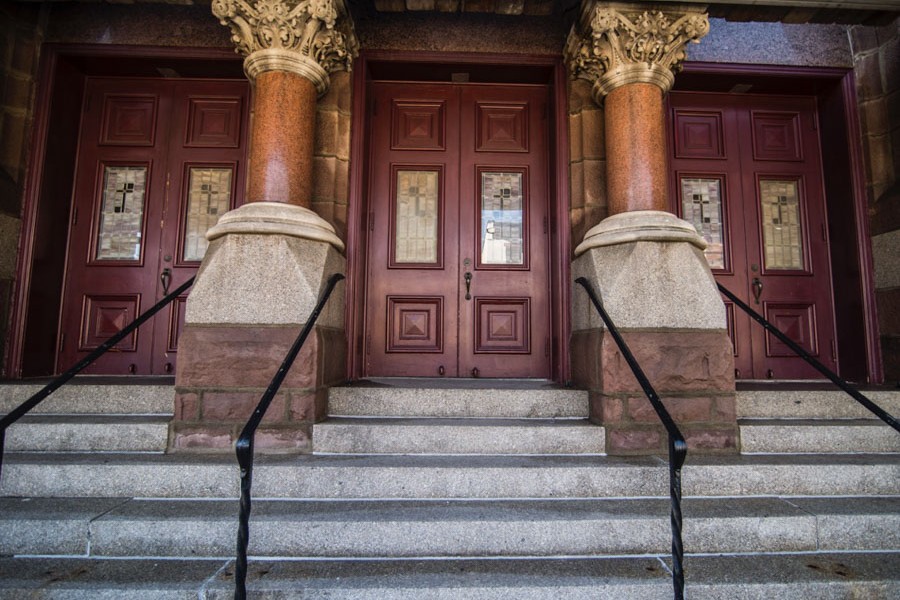
“There are certain elements you could designate in the interior that would not really interfere, (such as the paintings the columns), because the developer could incorporate those elements into the interior,” Beisert said. “But every statue, every piece of paint — that’s what makes it special. The space of the church, without having the objects in it [that would present obstacles for the developer’s plan], is not architecturally significant enough to designate as historic in my view, though.”
As a specialist in historic preservation, Beisert has seen similar situations to St. Laurentius play out all over Philadelphia in recent years.
“I’m just looking at this situation through a city-wide perspective,” Beisert said. “We have a lot of churches that are going to have to be decommissioned at some point or already are. They are all either underutilized or not maintained well and we have to find new uses for them.”
Beisert concluded by drawing distinctions in the ways other global cities utilize their historic architecture.
“Paris has a map of churches you can visit to look at the architecture and in Philadelphia we have a map of churches that we have demolished,” Beisert noted. “So we have to be very reasonable in how these buildings are reused, or else we will lose them.”
Voloshin stresses to the those in the community the urgency with which he feels his proposed adaptive reuse should be considered, given the alternatives.
“Our motivation is to really get going as soon as possible, so that we can really preserve the building before it’s too late,” Voloshin said. “[The more time that passes] the more expensive it gets, and this project really hinges on economic viability.”
The PHC will consider the nomination and the Committee’s non-binding recommendation for Historic Designation of the St. Laurentius church interior on January 13, 2017.
